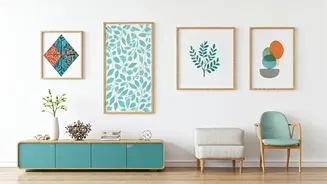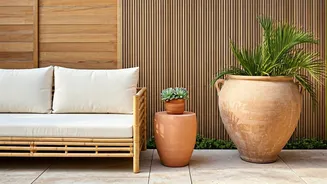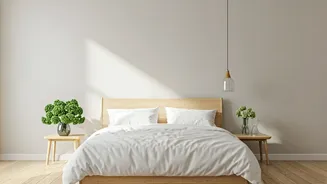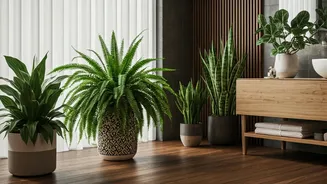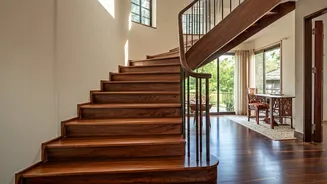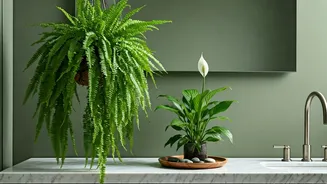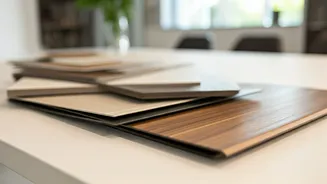Paint Your Canvas
Painting is a versatile and economical way to create personalized wall art. Experiment with different techniques and colors to reflect your personality.
Try abstract art using bold strokes and various hues, creating a statement piece that energizes your space. A geometric design, with sharp lines and contrasting colors, gives a modern feel. A simple canvas with a single, captivating color can create a focal point with elegance and simplicity. Moreover, by using different textures or adding texture with products like sand or gesso, you can amplify the visual appeal of your creations, adding dimension and interest to any room. To add extra uniqueness, try using repurposed items like old brushes for unique textures.
Fabric Scrap Adventures
Fabric scraps, often discarded, can be repurposed as intriguing art components. Utilize the varying textures, patterns, and colors of the fabrics to craft visually appealing collages. Explore the possibilities of layering different fabric pieces, stitching them together for texture or even applying them onto a canvas to make a unique three-dimensional effect. Fabric scraps can also be utilized to create unique wall hangings. Consider turning fabric scraps into framed artworks, or using them as the foundation for a patchwork design. Furthermore, using fabric scraps is not only environmentally friendly, but it lets you add unique textures and patterns that are affordable and simple to create.
Stencil Art: Patterns Galore
DIY stencils give you an opportunity to create patterns that match your style. Custom stencils using various materials, such as acetate sheets or cardboard, can be easily made at home, enabling a high degree of customization. The flexibility of stencils also allows you to experiment with diverse patterns, ranging from geometric to organic shapes. Using a stencil is relatively easy. Apply paint to a stencil with a brush, sponge, or spray paint. This method allows for consistent and precise reproduction of patterns, perfect for both novice and experienced artists. The choice of colors can significantly influence the final artwork; you can opt for bold combinations for a striking impact or softer tones for a calm effect. Moreover, stencils are reusable, allowing for cost-effective art production and the possibility of making numerous wall art pieces.
Nature's Touch to Walls
Incorporate natural elements to enhance the aesthetic appeal of your walls, bringing the serene beauty of the outdoors. Incorporating pressed flowers or leaves under glass creates a delicate, romantic vibe. Arrange the botanicals within a frame, varying the background color to highlight the organic beauty of nature. Furthermore, twigs and branches can be formed into sculptures or wall hangings, creating a unique, rustic appeal. Consider using driftwood as a canvas for art; the smooth surface can be adorned with paint or other elements, preserving the natural form of the wood while adding creative expression. Consider using pebbles or shells to design a mosaic effect on a piece of wood. Natural elements enrich any area, blending the indoors with the soothing beauty of the natural world.
Recycled Material Art
Recycled materials provide an excellent way to create art while promoting environmental awareness. Repurpose old newspapers and magazines by creating collages, papier-mâché sculptures, or even by simply framing interesting pages with compelling visual elements. Reusing bottles or containers, which can be transformed into striking wall art pieces. Consider cutting and arranging these materials into mosaics or applying paint to create visual effects. Additionally, the transformation of metal scraps or pieces of wood can yield one-of-a-kind, environmentally conscious art, offering unique texture and dimension. By embracing these techniques, you not only contribute to recycling but also express creativity. The use of recycled materials is an affordable approach to art, and it is a great way to turn trash into your own personal artistic treasures.
